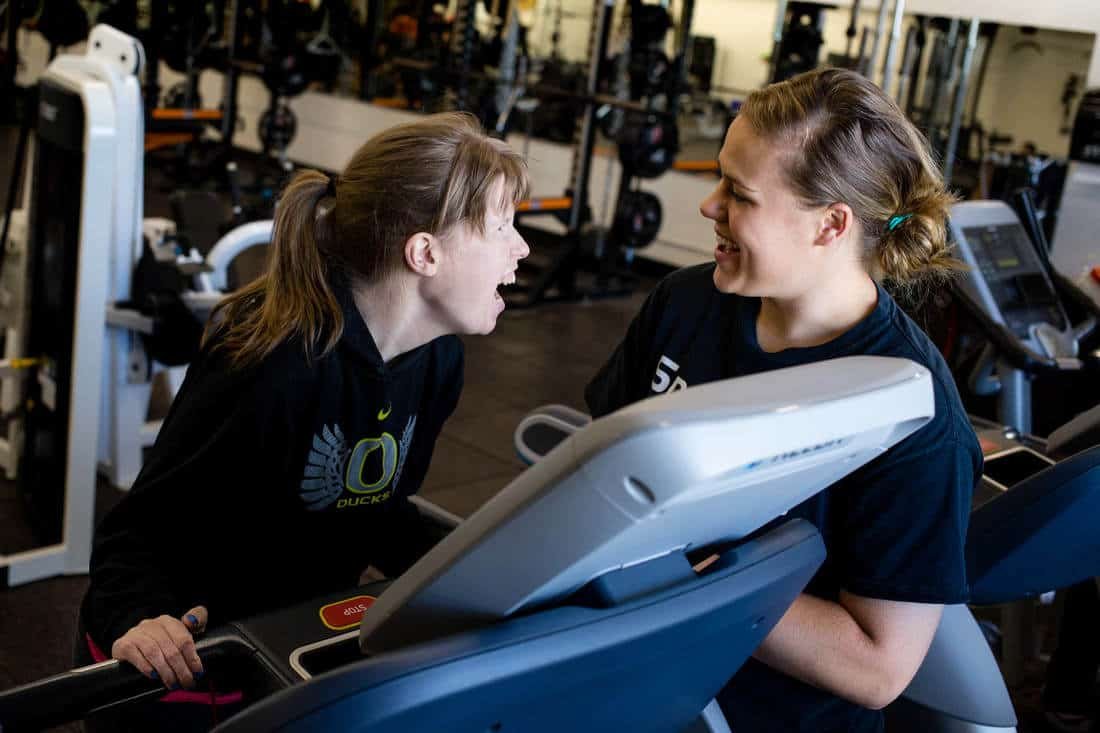Bring Order To Your Workout
 Photo Credit: Mary Rebekah Moore
Photo Credit: Mary Rebekah Moore
When you go to the gym, what is the first thing that you do? Do you go straight to the dumbbell rack and start doing bicep curls? Do you head to the bench press to see what your one rep max is? By programming your workouts and having the correct exercise order, it will help maximize your gains and reduce your chance of injury by ensuring your maximal force capabilities are available to complete your sets with proper technique.
Dynamic Warm-UpYou should always begin each training session with an 8-10 minute dynamic warm-up routine. Most people are used to static stretching before the workout. Don't do that. Save all of that for the end of your training session. You need to get the muscles activating and ready for work.
Exercise OrderYour exercise order will depend on the amount of resistance training sessions that you do each week. The arrangement that we use the most for our clients is described below.
Power, Other Core, then Assistance ExercisesThis is how we typically set up our sessions at Specialty Athletic Training because we like doing whole body workouts with each of our clients and this is the best set up to do so. We want to target the large muscle groups first with multi-joint movements, then hit the smaller muscle groups with more single-joint movement patterns.
We start with an explosive movement, example box/stair jumps because they force your body to exert the most energy. You want to be fresh when you do these movements. More complex movements that you could begin with would include Power/Hang Cleans, Power/Hang Snatches, and Jerks.
Following the Power exercises, you want to move on to other multi-joint exercises that target the large muscle groups. This is how we will generally set up our exercise order following the Power exercise.
1. Legs - Targeted by doing some version of a squat, deadlift, or lunge
2. Chest - Targeted with a variation of the bench press or push up
3. Back - Targeted with a variation of a row or pull (ex. single arm dumbbell row, blast strap inverted row, seated row, lat pulldown)
After the large muscle groups are targeted, we then move on to the smaller muscle groups of the body (ex. biceps, triceps) and do additional core stability work.
Now is time for the cool down. Make sure to go for a 5-10 minute walk or a nice easy bike ride to ease your heart back to it's resting state, followed by some of your favorite static stretches. You should always feel better leaving the gym than when you arrived and following these steps will definitely help you do just that!
 Ryan Lockard, CSCS, CFNS, is the head trainer and founder of Specialty Athletic Training. He is accredited by the National Strength and Conditioning Association (NSCA) as a Certified Strength and Conditioning Specialist, as well as by the International Sports Science Association (ISSA) as a Certified Fitness Nutrition Specialist. Ryan has worked with individuals with special needs since 2007 and has over 10,000 hours of 1:1 instruction working with individuals that have various special needs.
Ryan Lockard, CSCS, CFNS, is the head trainer and founder of Specialty Athletic Training. He is accredited by the National Strength and Conditioning Association (NSCA) as a Certified Strength and Conditioning Specialist, as well as by the International Sports Science Association (ISSA) as a Certified Fitness Nutrition Specialist. Ryan has worked with individuals with special needs since 2007 and has over 10,000 hours of 1:1 instruction working with individuals that have various special needs.

